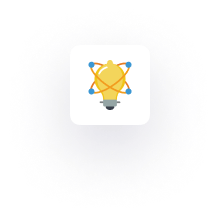Rust has become a top-tier language for system programming, web development, and embedded applications. Due to its memory safety, performance, and concurrency capabilities, it consistently ranks as the most loved language in Stack Overflow's annual developer surveys.
But what about Rust frameworks?
Rust has a growing framework ecosystem that makes it easier to build web applications, APIs, and backend systems efficiently.
This article will explore the top 5 Rust frameworks to learn this year based on popularity, community support, GitHub stars, and real-world usage.
By the way, before we explore the top 5 Rust Frameworks, let's look at some of the key attributes that make Rust suitable for Web Development.
Why Choose Rust for Web Development?
Rust offers a unique combination of high performance and memory safety, making it an excellent choice for web development. Its concurrency model ensures efficient handling of multiple tasks, and the growing ecosystem provides robust tools and libraries.
These attributes below make Rust suitable for building scalable and reliable web applications:
Memory Safety Without Garbage Collection: Rust’s most defining feature is its ownership system, which ensures memory safety at compile time without relying on a garbage collector. This eliminates common bugs such as null pointer dereferences, buffer overflows, and data races, leading to more stable web applications.
High Performance Comparable to C/C++: Thanks to its zero-cost abstractions and efficient memory management, Rust performs on par with C and C++. This makes it an excellent choice for building high-speed web services, APIs, and applications that require low latency.
Concurrency and Multithreading: Rust’s fearless concurrency model makes it easier to write multi-threaded applications safely. Web servers and APIs often need to handle multiple simultaneous requests, and Rust’s ability to prevent data races ensures stable and efficient request handling.
Security by Default: Security vulnerabilities such as buffer overflows, use-after-free, and race conditions are major concerns in web development. Rust’s strict compile-time checks prevent these issues, making applications inherently more secure.
WebAssembly (Wasm) Support: Rust is a first-class citizen in the WebAssembly (Wasm) ecosystem, allowing developers to write high-performance frontend applications that run in the browser with near-native speed. This is particularly beneficial for interactive web apps, gaming, and computationally intensive tasks.
We wrote a dedicated article that explores why you should choose Rust for Backend Development this year.
When you’re ready to dive into Rust for Backend Development, I will recommend taking the “Become a Rust Backend Engineer” course. It is an all-in-one Rust course for learning backend engineering with Rust. This comprehensive course is designed for Rust developers seeking proficiency in Rust.

Top 5 Rust Frameworks
I will list the top 5 best Rust frameworks to learn this year by evaluating them based on popularity, GitHub stars, and real-world usage.
Combining those criteria plus personal preference as of the time of writing, we have the following list of the best typescript frameworks.
Actix Web
Axum
Rocket
Warp
Tide
Actix Web
Actix Web is one of the most popular Rust web frameworks. It is known for its speed, scalability, and efficiency. Inspired by the actor model, it provides asynchronous request handling and high-performance web applications.
Features:
Asynchronous and concurrent processing with the Tokio runtime
Built-in support for WebSockets and HTTP/2
Middleware support for logging, authentication, and session management
Type-safe routing
High-performance benchmarks
Popularity:
GitHub Stars: 22.7k+
Crates.io All Time Downloads: 11.1M+
Usage: 67.9k+
 Actix Web is widely used in production applications, including backend services and real-time applications.
Actix Web is widely used in production applications, including backend services and real-time applications.
Learning Resources:
Axum
Axum, developed by the creators of Tokio, is a framework that leverages Rust’s async capabilities to build efficient web applications. It provides a developer-friendly API and integrates seamlessly with the Tokio ecosystem.
Features:
Type-safe request handling
Router-based architecture
Tower middleware support
WebSockets and SSE support
Popularity:
GitHub Stars: 21.1k+
Crates.io All Time Downloads: 112.7M+
Usage: 62.9k+
 Axum is rapidly gaining traction due to its simplicity and integration with Rust’s async ecosystem.
Axum is rapidly gaining traction due to its simplicity and integration with Rust’s async ecosystem.
Learning Resources:
Rocket
Rocket is a high-level web framework designed for simplicity and ease of use. It offers type safety and an intuitive API, making it an excellent choice for developers who want a balance between performance and developer experience.
Features:
Type-safe request and response handling
Automatic request validation and parameter extraction
Built-in support for templating, cookies, and authentication
Secure by default with strong compile-time checks
Popularity:
GitHub Stars: 25k+
Crates.io All Time Downloads: 6.4M+
Usage: 33.2k+
 Rocket is widely used for the rapid development of web applications and APIs.
Rocket is widely used for the rapid development of web applications and APIs.
Learning Resources:
Warp
Warp is a web framework built on Tokio that prioritizes speed, security, and flexibility. It is designed for creating APIs with minimal boilerplate while maintaining high performance.
Features:
Composable routing system
WebSockets and filters
Fully asynchronous and lightweight
Built-in error handling and authentication
Popularity:
GitHub Stars: 9.8k+
Crates.io All Time Downloads: 24.7m+
Usage: 28.8k+
 Warp is ideal for building high-performance microservices and lightweight web applications.
Warp is ideal for building high-performance microservices and lightweight web applications.
Learning Resources:
Tide
Tide is a minimalist and easy-to-use asynchronous web framework built on the async-std library. Its straightforward design makes it accessible for developers new to Rust or asynchronous programming. Tide is well-suited for small to medium-sized applications where simplicity and quick development are priorities.
Key Features:
Minimalistic API for ease of use
Built-in middleware support
Asynchronous from the ground up
Active development and community support
Popularity:
GitHub Stars: 5.1k+
Crates.io All Time Downloads: 2.03m+
Usage: 4.8k+
 Learning Resources:
Learning Resources:
Bonus Frameworks
For reading this long, I have a reward for you. The frameworks under the bonus section are rising stars. They have made significant progress but did not make it to the Top 5 Rust Framework this year.
Salvo
Salvo is a newer Rust framework that provides an intuitive API and flexible middleware system, making it a great alternative for developers looking for something lightweight but powerful.
Features:
Async-first design powered by Tokio
Support for WebSockets, gRPC, and RESTful APIs
Modular and customizable middleware
Built-in authentication and session management
Popularity:
GitHub Stars: 3.6k+
Crates.io All Time Downloads: 4.5m+
Usage: N/A
 Salvo is gaining attention in the Rust community for its modern API and growing ecosystem.
Salvo is gaining attention in the Rust community for its modern API and growing ecosystem.
Learning Resources:
Choosing the Right Framework
Selecting the appropriate Rust web framework depends on your project's specific requirements. Here’s a quick summary:
Performance-Critical Applications: Actix Web and Warp are excellent choices due to their high-performance capabilities.
Rapid Development and Ease of Use: Rocket offers a developer-friendly experience with minimal boilerplate.
Flexibility and Modularity: Axum provides seamless integration with middleware, allowing for extensive customization.
Simplicity and Accessibility: Tide is ideal for developers seeking a straightforward and easy-to-learn framework.
Salvo – A rising framework with a clean API and modular design.
Each of these frameworks has its strengths, and investing time in learning them can give you a competitive edge in Rust web development in 2025.
Conclusion
This article covered the top 5 Rust frameworks to learn this year, evaluating them based on popularity, GitHub stars, and real-world usage. Which Rust framework have you tried or plan to learn next? Let us know in the comments!




